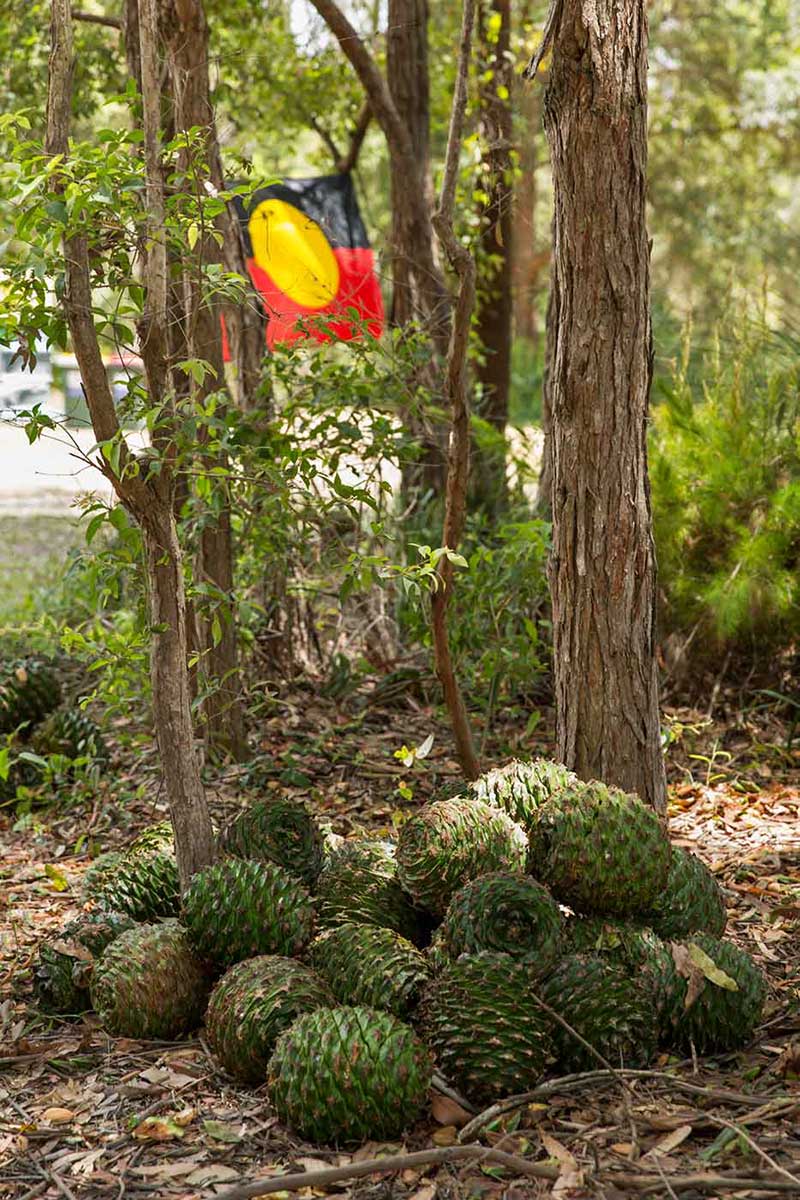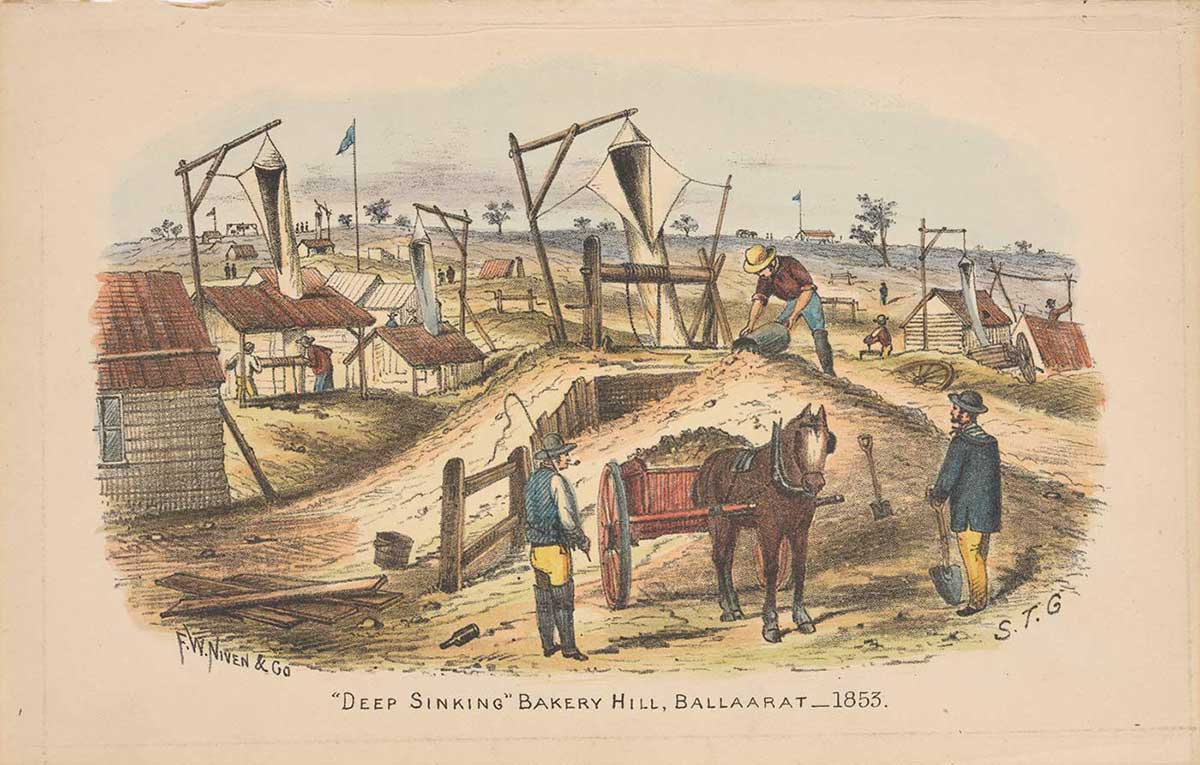This month we’re examining some of the hidden gems in our collection, literally. We’ll explore the gold rushes, 100-million-year-old fossilised bunya cones, and a composition by the Grigoryan Brothers inspired by a piece of haematite, or ochre.
Gold rushes Defining Moment
The discovery of gold in the 1850s started a series of rushes that transformed the Australian colonies. The first discoveries of payable gold were at Ophir in New South Wales, and then at Ballarat and Bendigo Creek in Victoria.
In 1851 gold-seekers from around the world began pouring into the colonies, changing the course of Australian history.
The gold rushes greatly expanded Australia’s population, boosted its economy, and led to the emergence of a new national identity.
Due to the rushes, Melbourne’s population reached 490,000 people in 1890, making the city the second largest in the British Empire. Melbourne was also one of the richest cities in the world and by the end of the 19th century the rushes had helped create a wealthy, liberal society with a standard of living that was the envy of the world.
Opalised bunya cones

On display in our new Great Southern Land gallery, launching in early 2022, are jewel-like, opalised araucaria cones from Lightning Ridge in northern New South Wales.
Alongside them are a spectacular array of fossilised Gondwanan vegetation. Together they evoke the deep evolutionary and geological past to which the bunya is bound.
Araucariaceae and Podocarpaceae were the dominant Southern Hemisphere conifer families of the Mesozoic era. Araucariaceae conifers are ancestors of the modern bunya tree (Araucaria bidwillii) and hoop pine (Araucaria cunninghamii).
Bunya is a species of great significance to the First Nations people of eastern Australia. They traditionally harvested its abundant offerings of large, nutritious nuts. Araucarian fossil material at Lightning Ridge is approximately 100 million years old.
These opalised cones will form part of a display in a towering bunya forest in our Great Southern Land gallery.
Deep Time
A piece of haematite (ochre) from the Madjedbebe rock shelter in Arnhem Land is the inspiration for the Grigoryan Brothers 'Deep Time' composition. Artefacts from the Madjedbebe rock shelter have been dated to 65,000 years ago, making them the oldest evidence of human history in Australia.
Grigoryan Brothers – This is Us series 02 Mar 2021
Deep Time
We’ll keep bringing objects, collections, exhibitions and programs from the vault as part of the Museum from Home experience. Stay tuned!
In our collection
You may also like

